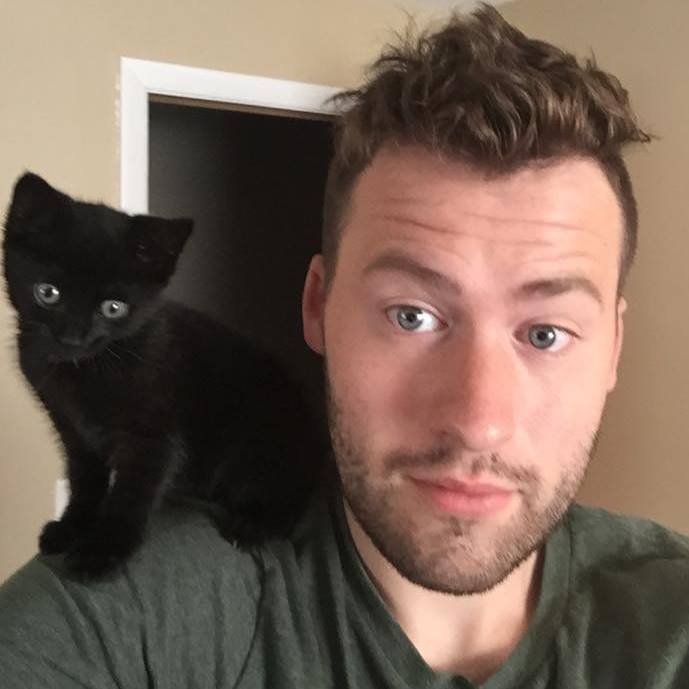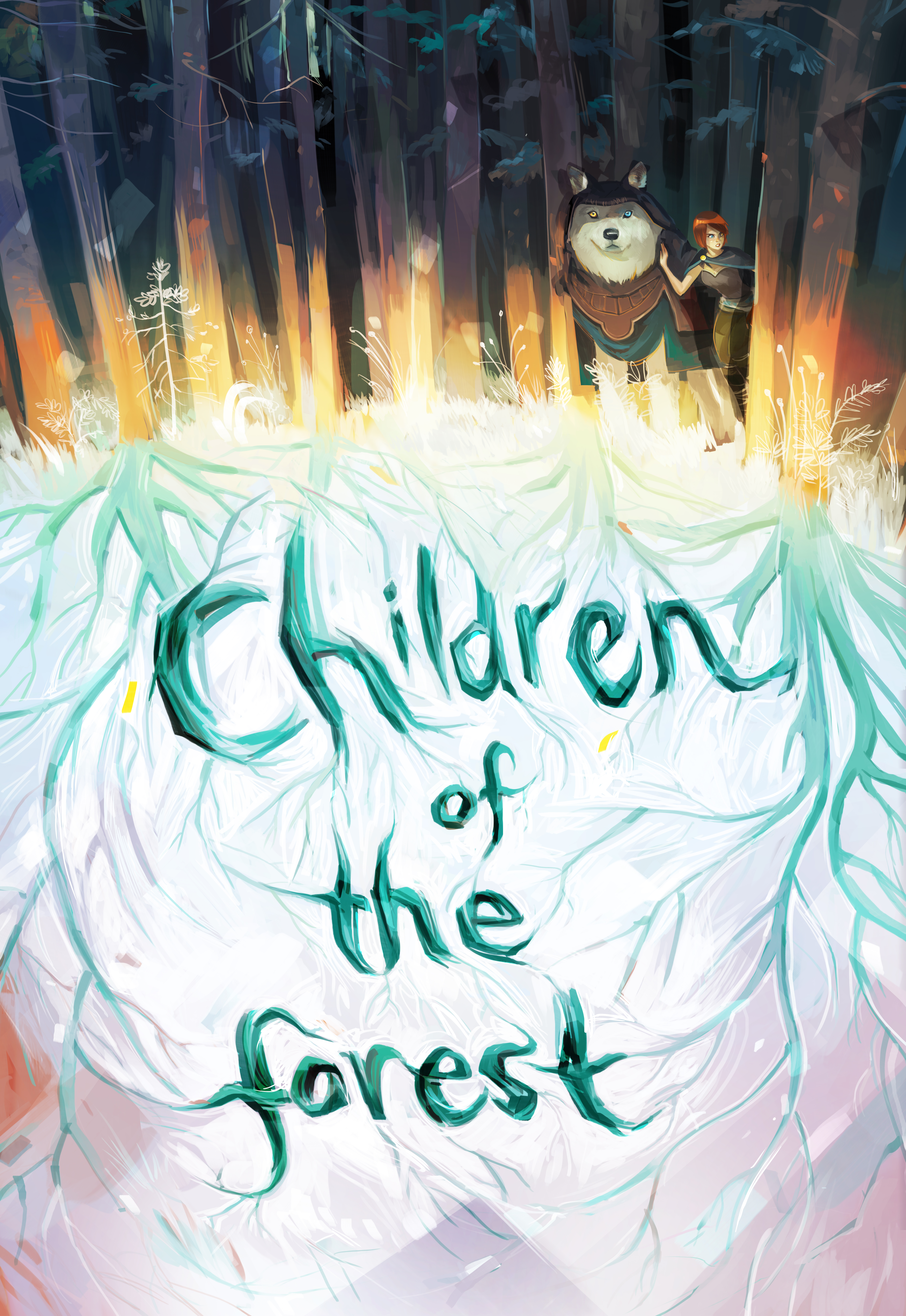Today we enter the world of one of our contributors, Byron Gillan, author of The Children of the Forest.
Byron Gillan is an avid reader, recent college graduate, and freelance writer, with multiple publications in various newspapers, magazines, and online websites. A self-described “animal-enthusiast” and environmentalist, along with a hopeless addict of Blizzard’s Hearthstone. Byron writes in primarily the Fantasy, Science-Fiction, and Horror genres. His first novel, “The Children of the Forest” was recently selected for publication through Inkshare’s “Quill” imprint.
Now, let’s enter world of Derrehain (Der-reh-ain)! Blanketed in mist and mystery, Derrehain is an ancient world, dominated by a handful of powerful kingdoms, and dotted across its expanse with the ruins of even older civilizations still.
Geography and Nature: the big picture
Overall geography: The overall geography of Derrehain is quite diverse. At its heart, the land is comprised of sprawling forests, rolling hills, and massive fields and plains, but go further towards the coast in any direction and this will quickly change. To the North lies the vast, frozen, and labyrinthine Ikor Mountains, while to the south the lands of Carncosa are covered in swamps and inhospitable jungle. To the farther West are the Bad-Lands; the rocky and desolate territory home to dangerous monsters and the fierce and tribal Men’kai. The East of Derrehain is dominated by the Imartii people, and comprised of dozens of both small and large island-chains that extend along the coast.
Special features that makes your world unique, exotic, or strange:
Perhaps most unique of all to my world’s geography is the World Tree – Yggdrassil. Standing above the city of Crimond, the Tree of Life rises hundreds of feet high, and can be seen from many miles away in all directions. Yggdrassil is the beating heart of the land, and directly tied to the continued ecological-cycles of Derrehain’s many different, diverse habitats. Beyond this, Yggdrassil is also directly responsible for magic as it exists in my world.
Magic and how it is defined in your world:
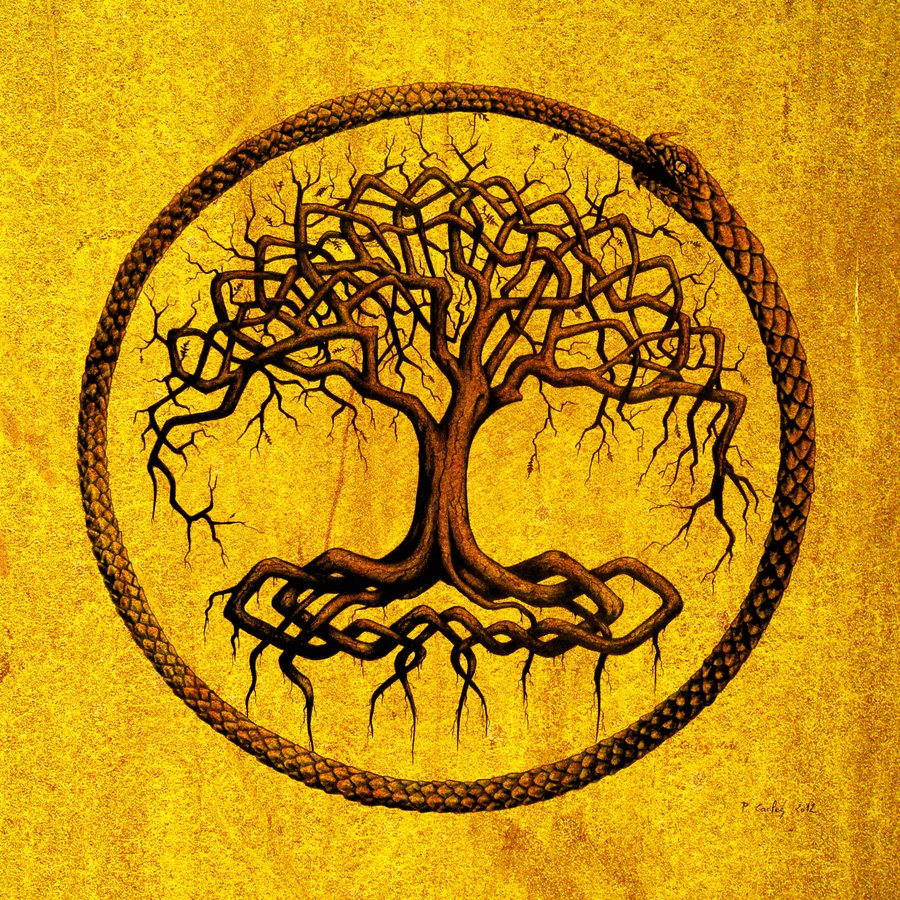 Through the great roots of the World Tree, which extend through the ground to reach all corners of the lands surrounding it, the magic is within Yggdrassil is transferred into the very sediment, infusing the land with ancient power called “manna.” Manna manifests itself as small pools of power, deep below the ground, and it is a material fought over by most of the cultures that dominate Derrehain. However it is the Tree of Life itself that is prized most of all. Yggdrassil bleeds manna, and whomever controls it, controls the balance of power.
Through the great roots of the World Tree, which extend through the ground to reach all corners of the lands surrounding it, the magic is within Yggdrassil is transferred into the very sediment, infusing the land with ancient power called “manna.” Manna manifests itself as small pools of power, deep below the ground, and it is a material fought over by most of the cultures that dominate Derrehain. However it is the Tree of Life itself that is prized most of all. Yggdrassil bleeds manna, and whomever controls it, controls the balance of power.
Races and cultures: your world and its people
Races or dominant species:
The cultures that dominate Derrehain are quite diverse though they can be broken up into five primary factions. It is important to keep in mind that along with these five kingdoms, there are dozens of smaller tribes, clans, and communities as well. Their numbers do not allow these groups to be represented as equals to the “big five.”
Humans are the dominate species across all of Derrehain, although there are non-human creatures that populate the world as well. Giants travel in small “clenns,” though they are rarely seen, due to being hunted to near-extinction. In addition, there are the elf-like Picts to the south, descendants of an old kingdom long since destroyed.
Aside from these, there are loose pockets of creatures more intelligent than baser animals ~ holdouts from an older time. They are few in number, and rarely trouble the more civilized world.
Dominant cultures:
The Commiggial: Located in the central heart of Derrehain, the Commiggial are the most dominate and powerful of the land’s kingdoms. Descended from the ancient Wardens, the Commiggial believe it is their sacred duty to protect the Tree of Life from corruption by the hands of man. To this end, they do not take from Yggdrassil’s manna, save only on rare occasion. For generations, the Commiggial have dutifully protected the balance of Derrehain, and ensured a relative and stable peace across their world.
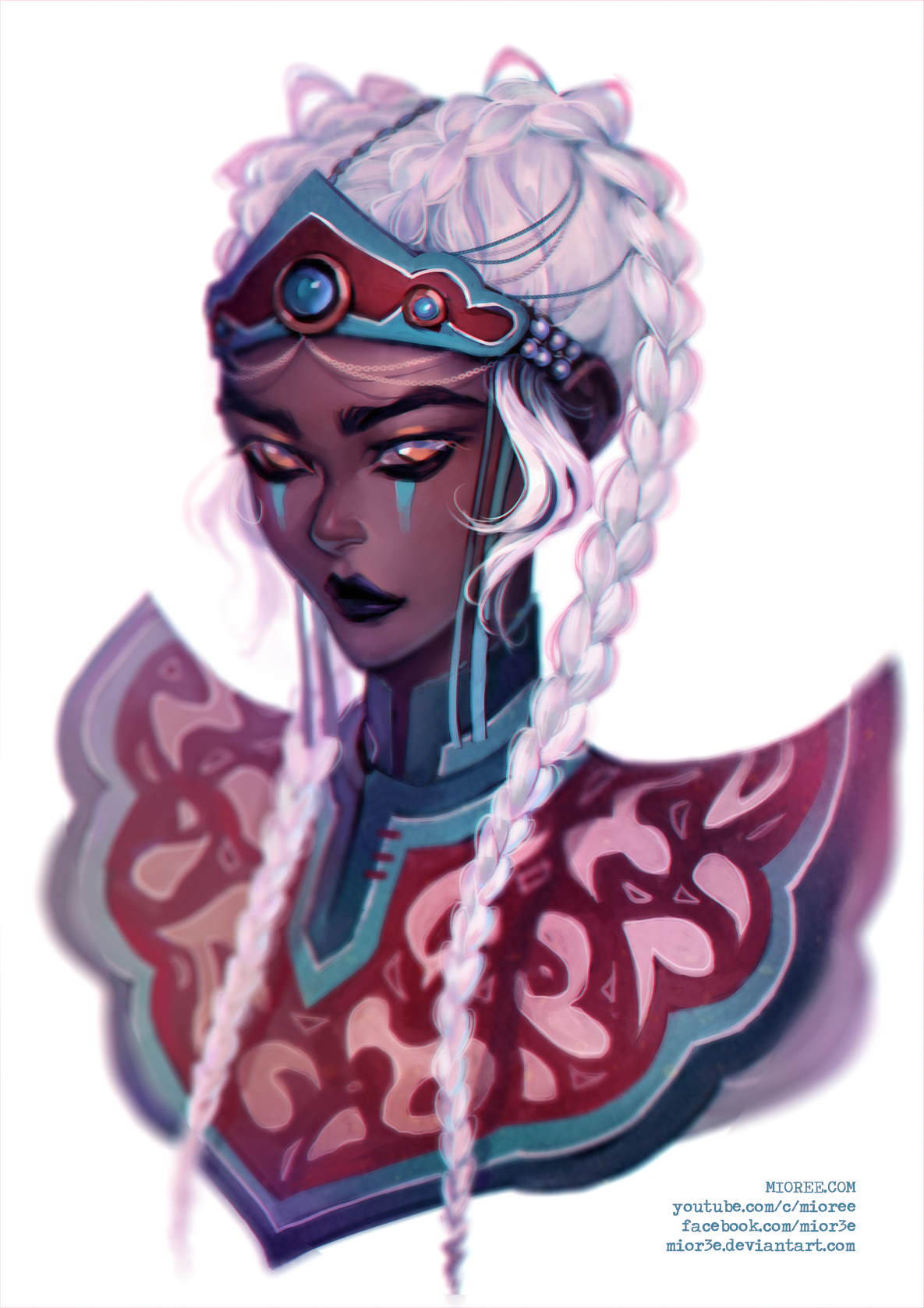 The Men’kai: Far to the West lies the Bad-Lands, a vast expanse of arid plains and rocky bluffs and valleys. Within this dangerous world dwell the Men’kai tribes. Onyx-skinned and golden-eyed, with silver hair, the Men’kai are perhaps the most exotic of Derrehain’s races. Taller than average humans, and considerably stronger, the Men’kai have evolved into a culture that values strength above all else. In older times the Men’kai warred constantly, both with themselves and against the other kingdoms of Derrehain. However, after their crushing defeat at the hands of the Wolf-Riders, the Men’kai embraced a more peaceful coexistence with their neighbors.
The Men’kai: Far to the West lies the Bad-Lands, a vast expanse of arid plains and rocky bluffs and valleys. Within this dangerous world dwell the Men’kai tribes. Onyx-skinned and golden-eyed, with silver hair, the Men’kai are perhaps the most exotic of Derrehain’s races. Taller than average humans, and considerably stronger, the Men’kai have evolved into a culture that values strength above all else. In older times the Men’kai warred constantly, both with themselves and against the other kingdoms of Derrehain. However, after their crushing defeat at the hands of the Wolf-Riders, the Men’kai embraced a more peaceful coexistence with their neighbors.
The Imartii: Great seafarers and adventures, the Imartii are a culture built upon personal glory and self-fulfillment. Spread across the complicated network of island-chains to Derrehain’s East, the Imartii people divide themselves into independently ruled city-states. These separate states are technically joined together by a loose “Confederacy,” though this all but in name only. The Imartii believe that the physical world they inhabit is merely a form of “purgatory,” and that the true world – their Valhaven, lies beyond. The only way for an individual to reach Valhaven is through glory, rather in conquest or adventure, it matters little. To this end, Imartii culture is less concerned with advancing an overt political agenda, and instead built around the premise of proving the Imartii societies’ worth to their Gods.
Alethia: To the far North lies the frozen lands of Alethia. Alethia is a mostly mountainous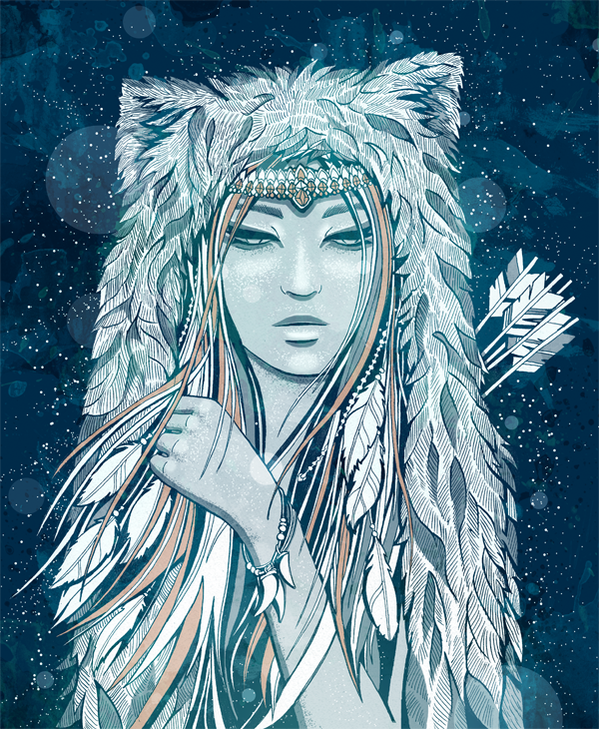 region, covered almost perpetually in snow and ice. Long ago, the land was controlled by a race of creatures who were very different from humans. These creatures, the true Alethians, died out due to unknown reasons, and were replaced by the human slaves that had served them. These slaves would eventually transform into the current Alethian society – a culture bent on controlling magic throughout all of Derrehain. Warlike and corrupt, Alethia seeks to conquer the world for their own nefarious ends, though their machinations are made difficult by the lack of manpower and resources at their disposal. The lands of Alethia suffered a catastrophic disaster some time past, leaving the land desolate and barren. The need for food and other essential requirements now fuels Alethia’s war-making on lower Derrehain.
region, covered almost perpetually in snow and ice. Long ago, the land was controlled by a race of creatures who were very different from humans. These creatures, the true Alethians, died out due to unknown reasons, and were replaced by the human slaves that had served them. These slaves would eventually transform into the current Alethian society – a culture bent on controlling magic throughout all of Derrehain. Warlike and corrupt, Alethia seeks to conquer the world for their own nefarious ends, though their machinations are made difficult by the lack of manpower and resources at their disposal. The lands of Alethia suffered a catastrophic disaster some time past, leaving the land desolate and barren. The need for food and other essential requirements now fuels Alethia’s war-making on lower Derrehain.
The Pictish Tribes: Long before the coming of man, the world of Derrehain was dominated by the Pictish peoples. The Picts are pale creatures, and taller than ordinary men. They possess curved eyes, pointed ears, and an innate ability to perform basic magic without the requirement of manna. The Picts are a strange race, and wary of outsiders. Few are ever seen interacting with the human kingdoms to the north of their lands. The Picts prefer the company of their own kind, believing themselves to be above the other mortal races.
People and groups: social organization in your world
Tell us about the major societies of your world and overall social organization:
Of all the various factions, kingdoms, and sprawling empires I’ve developed for my story, none have enraptured my interest quite so much as the Wolf-Riders. Also known as the “Wardens,” the Wolf-Riders were an ancient order of spiritual warriors, whom bonded their souls with spirits of the forest. These spirits would manifest themselves as different creatures, almost always in the case of the Wolf-Riders as “wargs.”
Larger than normal wolves, wargs are powerful creatures of nature, and capable of vastly superior feats of both strength and agility. Wargs also possess magical quantities, due to their origins as spirits of the forest. These traits, such as heightened hearing, strength, and speed, along with the ability to regenerate from devastating wounds, are in turn passed on to the human who binds them. Thus, once a Wolf-Rider and warg are joined, they become a formidable force to be reckoned with.
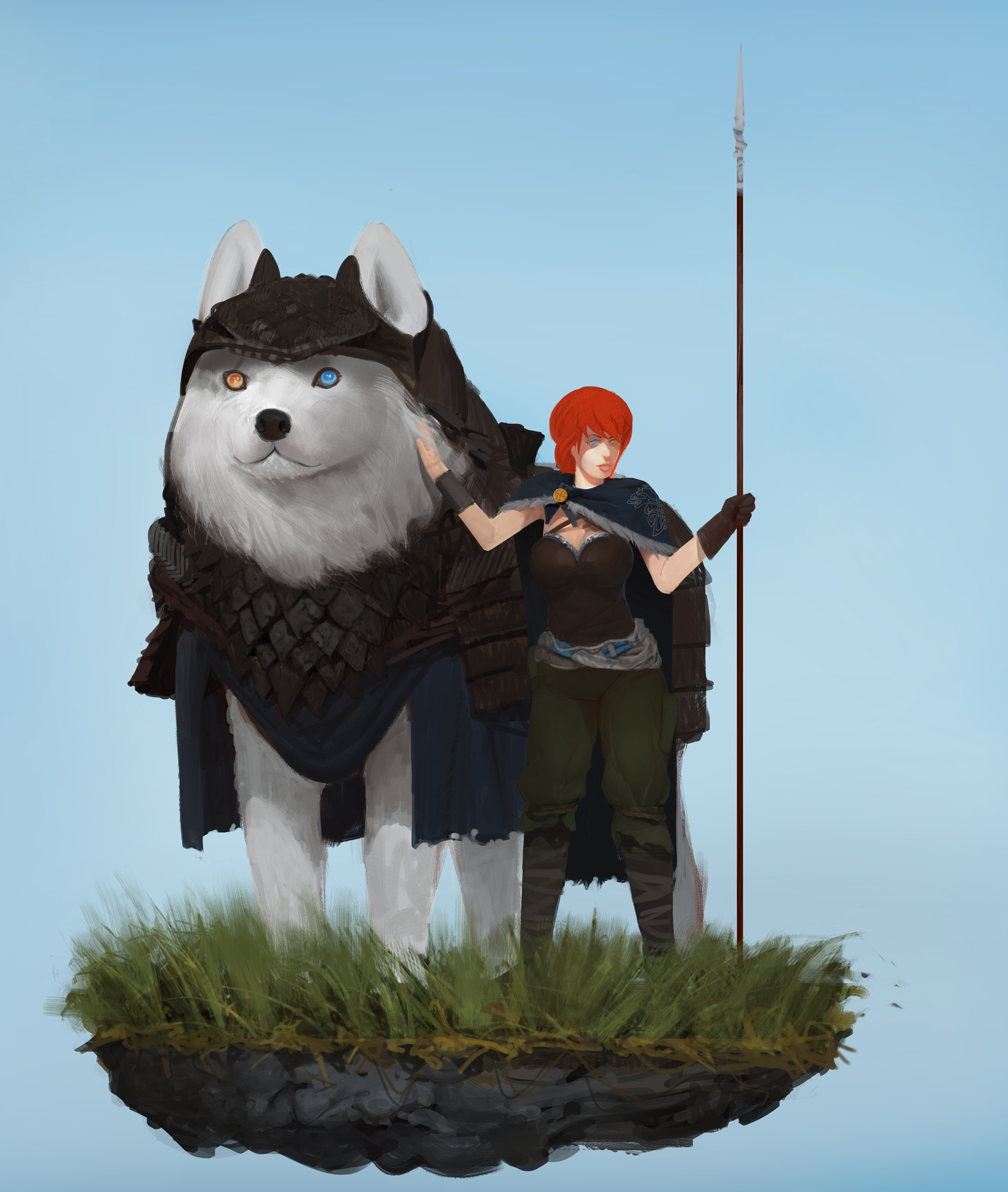 Throughout much of Derrehain’s history, the Wolf-Riders were instrumental in defending the natural order. From within the central city of Crimond, atop which grew the Tree of Life, the Wolf-Rider order defended the lesser kingdoms from evil. It was the Wolf-Riders who vanquished the daemons that once plagued the lands of men, and it was they who put an end once and for all to the Men’kai Wars. Through much of known history, the Wolf-Riders had a hand, until their order came to a disastrous end.
Throughout much of Derrehain’s history, the Wolf-Riders were instrumental in defending the natural order. From within the central city of Crimond, atop which grew the Tree of Life, the Wolf-Rider order defended the lesser kingdoms from evil. It was the Wolf-Riders who vanquished the daemons that once plagued the lands of men, and it was they who put an end once and for all to the Men’kai Wars. Through much of known history, the Wolf-Riders had a hand, until their order came to a disastrous end.
In the year 320 C.E. the Wolf-Riders were split apart by a great rift within their ranks. Driven to civil war, brother fought against brother in an extended and bloody campaign. By the end, too many of the Wolf-Riders had perished. Their numbers and resources exhausted, the surviving members turned their efforts towards rebuilding the land. In time, the Commiggial arose from the ashes to inherit the task of protecting Yggdrassil. What became of the final few Wolf-Riders, none know. The handful that remained vanished only shortly after the establishment of the Commiggial, and they were never heard from again…
Settings: zeroing in on the fine details of your world
What are the major settings in your novel?
In an attempt to keep the book as focused as possible, I’ve chosen the setting to remain primarily focused on Nin, the land of the Commiggial, and Alethia. The conflict of these two powers is the central focus of book I, though the reader is offered a fair bit of backstory or glimpses of the larger world beyond these two territories.
What is one of your favorite settings and how is it laid out?
I’m quite partial to the Imartii. Their society is a mixture of Greek and Norse culture, both of which favored the concept of heroes, and glory. The city-state nature of their government is likewise quite intriguing, and makes for an interesting contrast to the more-traditional kingdoms and empires of the rest of Derrehain.
Want to know more about Byron Gillan’s world? Why not enter it by pre-ordering a copy of his book, The Children of the Forest.
Four heroes must come together to save their world from ecological-devastation in this Fantasy-Adventure.
“The human conflict gives this story a special spark, and the characters are rich with detail.”
— anonymous reviewer
“I’ve known Mr. Gillan since he was a young boy, and I can safely say I’ve always seen great potential in both his work ethic, and his love for the craft of writing. This story feels like the culmination of a decade of growth, and I look forward to seeing what his future holds next.”
— anonymous reviewer
“In this dawning age of strong, complex heroines — characters like Jessica Jones, and Supergirl and, of course, Katniss Everdeen — Byron Gillan introduces us to the next great warrior heroines, and I, for one, can’t wait to see how these fierce fighters turn out. Gillan has concocted a complex dystopian future where humanity itself is at stake. His imagination soars, and the writing flows effortlessly, with each chapter leaving me longing to know more about this wildly imagined future. You should pre-order Children of the Forest!”
— anonymous reviewer
Excerpt:
We are all the Children of the Forest.
Long ago, when the spirits of the earth were still young, man came forth onto the world. The Mother had created man to mirror her own image. It was the duty of man to go and tend to the world in her stead – for the Mother was tired, and it was her time to rest. But such a burden of responsibility was difficult to uphold. Man had not always lived up to the mantle of his destiny. Throughout history, time and time again, he forgot where it was life originated, and who gave it. Those few, simple words were left behind to help future generations remember. Remember that together we are all children of the Mother – The Children of the Forest.
Fionna Cohmwell studied the small plaque beneath the base of the World Tree. The words were chiseled deep into the surface of the stone plaque, and each letter was filled in with poured-gold. She ran one hand along the surface. We are all the Children of the Forest, she repeated in her head. Then she smiled. Fionna was only twelve and even she understood the significance of those words. She gathered her spear and bag and raced across the grounds surrounding Yggdrassil, towards her favored climbing spot. High above the World Tree dominated the skies, standing hundreds of feet tall as it stood silent vigil over the vast city of Crimond that lay beneath its sprawling canopy. The druids taught that within Yggdrassil dwelled the vast majority of the world’s spirits. From within the tree they cultivated the greenery and life of the land, and continued the endless cycle of nature through each of its seasons. It was a rare thing for the spirits within Yggdrassil to drift out into the physical world – rare enough, in fact that most who dwelled in Crimond had never even seen one – but Fiona liked to pretend that they accompanied her whenever she climbed upon the outstretched roots of Yggdrassil’s many arms.
The spirits Fionna gave pretend-life to were her closest confidants and her greatest friends. They were the characters in make believe stories she played out in her head. There were good spirits and bad ones (though the bad ones were never truly evil, only mistaken in their actions) and in the end good would always triumph over evil. Of the myriad tales she invented, her favorite were always those in which she pretended to be a Wolf-Rider. They were ancient warriors, long gone, who had bonded their minds to spirits that had taken physical form in the likeness of wolves, though these were no ordinary creatures of the wild. These wolves were as large as bears, and swifter than the fastest steeds. They were wargs.
Today it was her intention to reenact the famous last stand of the Wolf-Riders against the Pictish hordes Fionna was still busy putting together the finishing touches on the story she would employ, as she rounded the corner of one of Yggdrassil’s long tendrils and very nearly collided with her father. Beric Cohmwell, the King of Nin, waited with arms folded on the pathway ahead. He was dressed in a kilt decorated with the blue-yellow-red pattern of the family tartan, matching sash over the shoulder of his leather jerkin. At his waist her king-father was wearing his sword belt and blade.
“Where might you be going, little lass?” he asked her.
Buy the book!
EBOOK: Inkshares
PRINT BOOK: Inkshares
Connect with Byron in the following places!
Website: Inkshares
Blog: Byron Gillan
Facebook: The Children of the Forest
Twitter: @ByronGWriterGuy

